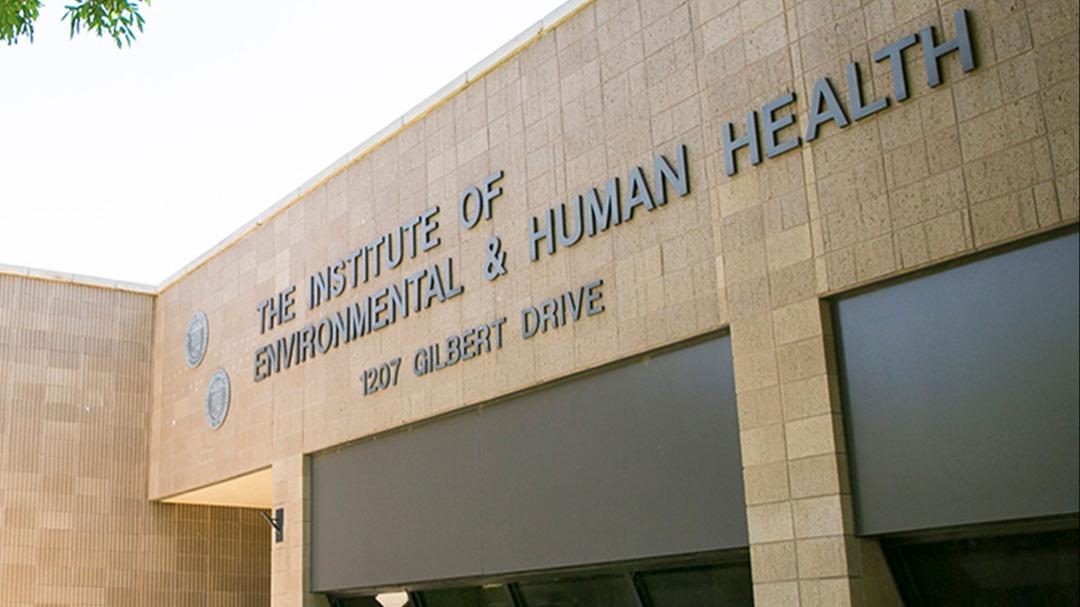Researchers from the Biological Threat Research Laboratory played a critical role in testing for the virus.
Texas Tech University’s Biological Threat Research Laboratory (BTRL) played a critical role in confirming the first case of highly pathogenic avian influenza transmission from a mammal (dairy cow) to a human.
The case was made public in an article published in the New England Journal of Medicine. Steve Presley, the director of The Institute of Environmental and Human Health (TIEHH) and the BTRL, and Cynthia Reinoso Webb, the biological threat coordinator at TIEHH, were co-authors on the journal publication.

The journal article explains that in March a farm worker who reported no contact with sick or dead birds, but who was in contact with dairy cattle, began showing symptoms in the eye and samples were collected by the regional health department to test for potential influenza A.
The concern stemmed from recent testing results on dairy farms across the region. Dairy cattle, some showing signs of illness but others asymptomatic, had tested positive for highly pathogenic avian influenza (HPAI).
Given the HPAI outbreak in dairy cattle, Reinoso Webb increased the precautions with all the raw milk testing, moving dairy sample testing into the biosafety level three (BSL-3) lab, a high-containment laboratory, where the work could be done with minimal risk of exposure to themselves and the environment.
“We have a milk and dairy product quality assurance lab we test dairy products, from raw milk to ice cream, for the region. That’s part of the state health services contracts we have,” Presley said. “That work is typically done in a BSL-1 level lab, which is like a kitchen. Dr. Reinoso Webb was very on her toes, for lack of a better term, to say ‘Hey, we’ve got people testing raw milk in a BSL-1 and there’s avian influenza virus in dairy herds confirmed.’
“This was even before the human case was determined. In a risk assessment, she decided to move into BSL-3 if there is potential for the virus to be present and infectious in the unpasteurized milk that was being tested.”
So, when the concern of a human case came up, the BSL-3 lab was ready for the challenge.
“Before we tested the human case in the Centers for Disease Control and Prevention (CDC) Laboratory Response Network-Biological (LRN-B) facility located with the Texas Tech BTRL, we had already established communications with the CDC,” Reinoso Webb explained.
“Being part of the CDC LRN-B, we have the standing capability to test for a lot of biological threats and some that are considered emergent.”
Reinoso Webb and the team at TIEHH responded quickly to the needs of the regional public health authority knowing the potential dangers of the virus. Having received the samples in the early evening, within hours results were being reported back to the regional, state and federal levels. By the next day the samples were on their way to CDC for further testing.
“We were on the phone with the CDC until around midnight discussing different scenarios and follow up requirements,” Reinoso Webb said. “There is a lot of federal reporting. It was a very complicated case, even though it was two samples and one patient.
“But we had this wonderful communication with the CDC and made sure we did everything by the book. This is how it’s been structured, and this is how the communication was supposed to happen.”
While the transmission of HPAI to humans is concerning, the ability of places laboratories like the BTRL at TIEHH to get answers to protect public health in a timely and accurate manner is immensely helpful in containing potential biological threats.
“We had never received a request for this testing before,” Reinoso Webb explained.
The request for testing came on a weekend and the team had to quickly prepare and put together a risk assessment specific to the incoming samples.
“There’s so much continued maintenance and competency tests that may not be used for years,” Reinoso Webb said. “But when they are needed, we are prepared and competent to run the test.”
With the human case presenting as eye inflammation rather than any type of upper respiratory infection, the likelihood of it spreading quickly decreased. Although it was one case, the information from the test results and clinical presentation provided insight into the threat posted to public health by this virus.
“It’s a huge thing that the virus has jumped from birds to mammals, dairy cows in this case, and then to humans,” Presley said. “That’s why this paper in the New England Journal of Medicine is, I think, very significant. It’s going to lay the foundation, I believe, for a lot of research in the future of how the virus is evolving.”

